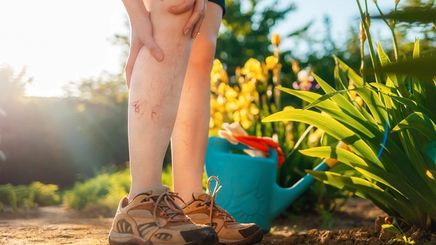
Many people associate varicose veins with aging. However, it’s not unknown for women in their teens and 20s to notice these bulging, spidery blue-green threads crawling up their legs. According to Harvard Health, half of all women and about a quarter of men develop them to some extent.
Varicose veins are blood vessels just beneath the skin. The BMJ study “Varicose Veins and Their Management” says that they are caused by incompetent valves that cause reflux of blood. For your blood to circulate back to your heart, your veins must work against gravity. If the valves in your veins are wonky, the blood stalls at your legs. This pool of blood inflates large enough that the vein becomes visible through the surface.
What Causes Varicose Veins?
Weak or damaged valves are usually the culprits behind varicose veins. Numerous factors can also make a person predisposed to these protruding veins, such as gender (more females are affected), age, weight, genetics, and even lifestyle. Sitting or standing still for extended periods can also affect the blood flow, which may give rise to varicose veins.
Varicose Veins Symptoms
The majority of the varicose-veins-afflicted will likely see them as a cosmetic concern. However, the more severe onset can cause discomforts, such as discoloration, a feeling of heaviness, cramping, dull aches, inflammation, and blood clots. Worse cases even report bleeding and skin ulcers.
How to Prevent Varicose Veins
The measures you can employ to prevent varicose veins are the same ones you can use for self-management. The crucial tip is to keep the blood flow running, especially on the bottom half of your body. If you believe you’re prone to developing varicose veins (do your parents have them?) or you see the first signs, then start practicing the following to alleviate the situation:
Don’t skip leg day.
Strengthening your leg muscles can assist in helping your veins pump the blood back up. Harvard Health says that swimming is a suitable activity since the water pressure can compress the veins. Moreover, you should . Maintaining a healthy weight can help reduce the burden on your legs.
Wear varicose-veins-approved clothing.
Say hello to compression socks! These press on the leg veins to stimulate and maintain blood flow. Wear them first thing in the morning and take them off before going to bed. Compression socks are ideal because they’re tight enough to get your blood going yet elastic enough not to restrict your muscles and veins.
That said, not all snug clothing will work the way compression stockings do. Skinny jeans, for example, will likely affect movement in your veins and muscles. Unless you’re wearing more flexible legwear, you might want to get used to baggy pants.
Keep things low.
Your shoes also play a crucial role in preventing and managing varicose veins. High heels affect blood flow since they cause the calf muscles to contract and lose efficiency in aiding the veins. According to a Journal of Vascular Surgery study, the higher the heel, the more diminished the muscle pump function. Continued use of high heels also provokes venous hypertension in the lower limbs, which can cause venous issues, including varicose veins.
Invest in footwear that is ergonomic, comfortable, and offers a ton of support to your feet and body. Fortunately, you live in an age where technology and fashion can live together comfortably.
Take good care of your skin.
Swelling can cause the skin surrounding varicose veins to become – which can lead to more problems. Make sure to apply lotion regularly. Vaseline Healthy Bright Fresh & Bright Cooling Body Lotion will not only moisturize your skin thanks to the Vaseline petroleum jelly in its formulation, but it can also help soothe venous inflammation. Since it has , it can also keep threatening at bay.
Most treatment options for varicose veins require lasers or surgery. However, these are for the more extreme cases. You can live with varicose veins comfortably so long as you practice the measures above.